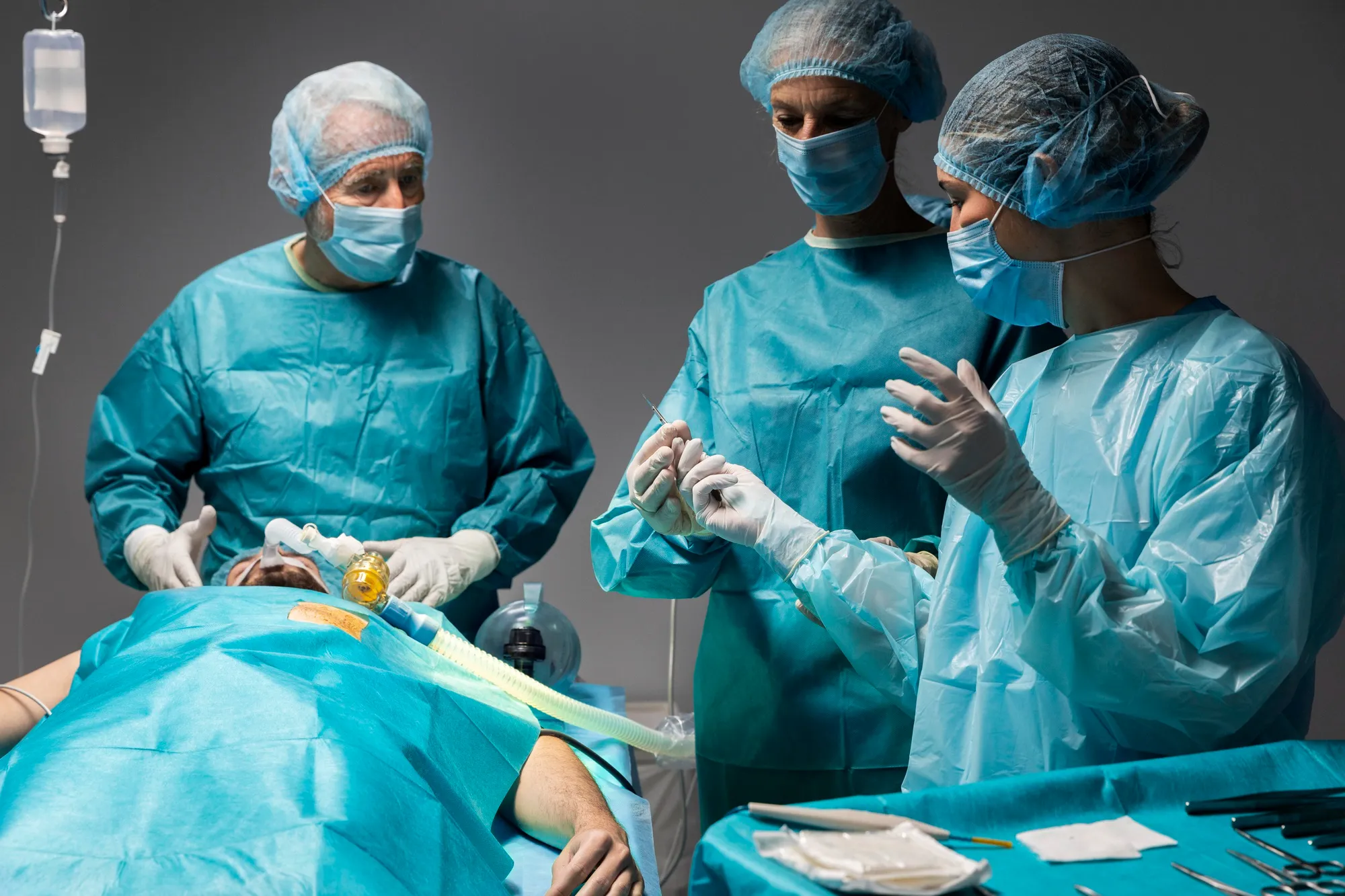Citation
Piszker, A. J., Lee, Y. F., Roberts, J. E., & Cleary, R. K. (2019). Perforated diverticulitis of the sigmoid colon contained within an inguinal hernia sac. BMJ case reports, 12(5), e227990. https://doi.org/10.1136/bcr-2018-227990
Keywords
1. Sigmoid colon diverticulitis
2. Inguinal hernia complications
3. Emergency hernia surgery
4. Colostomy and hernia repair
5. Hartmann’s procedure recovery
A 61-year-old man recently presented a unique challenge to the medical community when he arrived at the emergency department with symptoms that revealed an intricate confluence of conditions: a perforated diverticulitis of the sigmoid colon that was contained within an inguinal hernia sac. This rare case not only emphasizes the diagnostic difficulties faced by healthcare professionals but also sheds light on the critical decision-making required in the surgical management of complex hernias.
The patient’s initial complaints were left testicular and groin pain, coupled with loose stools, which might make one suspect common afflictions such as epididymitis or run-of-the-mill digestive troubles. However, upon further examination using CT imaging, the discovery of a left inguinal hernia containing a perforated segment of sigmoid colon indicated a far more severe scenario. The finding was akin to inadvertently uncovering a ticking time-bomb nestled unassumingly within the body—a crisis waiting to escalate without immediate intervention.
Inguinal hernias themselves are quite common and often repaired with routine elective surgery. However, when such a hernia becomes incarcerated or strangulated, the patient can face life-threatening complications. The presence of bowel perforation within a hernia sac complicates the situation even more, catapulting it into an emergency that requires prompt and delicate surgical management to prevent widespread infection (peritonitis) or even death.
The case at hand is not unprecedented but is indeed rare, with only a handful of similar occurrences documented within medical literature. These instances include past reports such as the perforation of a solitary diverticulum of sigmoid colon in an incarcerated scrotal hernia described by Kouraklis et al. (2004) and the case of a perforated sigmoid diverticulum found within a strangulated inguinal hernia reported by Tufnell and Abraham-Igwe (2008). These cases help establish a thin but vital thread of knowledge for clinicians encountering similar challenges.
In this particular situation, the surgical team proceeded with a segmental sigmoid colectomy and a temporary end colostomy, known as Hartmann’s procedure. This operation was necessary to tackle both the perforated diverticulitis and the compromised state of the sigmoid colon. Notably, the decision was made to leave the inguinal hernia unrepaired at the time due to the significant fecal contamination present within the hernia sac. Such a maneuver circumvents the elevated risk of infection and hernia recurrence that often accompanies immediate repair in the context of contamination.
Hernia repair, especially under contaminating conditions, is a source of much debate and requires a nuanced approach. This is corroborated by Cheek (1997), who highlighted the incidence and risks of emergency hernia surgery, as well as the HerniaSurge Group’s (2018) international guidelines for groin hernia management that offer critical insights for handling such complex scenarios. Repairing a hernia in a clean operative field drastically reduces the chances of infective complications and subsequent morbidity or mortality. Delaying the hernia repair until a later date, while pragmatic in this case, is not to be taken lightly.
The pathological examination of the resected bowel confirmed the diagnosis of perforated sigmoid diverticulitis, situated within an inguinal hernia sac. Diverticular disease, as delineated by Stollman and Raskin (2004), affects the colon’s muscular wall, leading to the formation of pouches (diverticula) that can become inflamed or infected. When a diverticulum perforates, it constitutes an emergency requiring prompt surgical treatment to mitigate the onset of severe complications such as widespread abdominal infection or sepsis, as noted in the work of Edna et al. (2014).
Fortuitously, the patient had an uneventful recovery and is lined up for future definitive inguinal hernia repair and colostomy takedown—a process where the temporary diversion of the bowel is reversed and normal bowel function is restored. The success of Hartmann’s procedure and the subsequent recovery phase is consistent with the guidance and outcomes presented by Feingold et al. (2014), which detail treatment strategies for sigmoid diverticulitis.
The implications of the case are vast, prompting an examination of the overall preparedness of medical institutions to deal with such acute surgical crises. It also highlights the need for continuous professional development and learning in the complex realm of gastrointestinal surgery. As research on these intersecting conditions grows, it is paramount to disseminate such findings widely to ensure that our healthcare frameworks are equipped to provide the most favorable patient outcomes possible.
The patient’s favorable recovery also underlines the necessity of considering long-term strategies in managing hernias and related complications. Fitzgibbons et al. (2006) underscored the importance of carefully weighing the benefits of immediate versus delayed repair of minimally symptomatic inguinal hernias. The strategic avoidance of repairing the hernia at the initial stage in this patient’s surgical intervention was indeed proven to be a prudent choice in light of the potential risks.
As healthcare professionals ponder over similar cases, this particular event serves as a reminder of the complexities inherent in medical practice and the need for readiness to tackle sudden and unusual clinical presentations. The adaptability and sharp clinical acumen displayed serve as the linchpins for successful outcomes in such critical surgical emergencies.
References
1. Cheek, C. M., Inguinal hernia repair: incidence of elective and emergency surgery, readmission and mortality. International Journal of Epidemiology, 1997;26(2):459–461. doi:10.1093/ije/26.2.459
2. Feingold, D., Steele, S. R., & Lee, S., Practice parameters for the treatment of sigmoid diverticulitis. Diseases of the Colon & Rectum, 2014;57(3):284–294. doi:10.1097/DCR.0000000000000075
3. Fitzgibbons, R. J., Giobbie-Hurder, A., & Gibbs, J. O., Watchful waiting vs repair of inguinal hernia in minimally symptomatic men: a randomized clinical trial. JAMA, 2006;295(3):285–292. doi:10.1001/jama.295.3.285
4. HerniaSurge Group, International guidelines for groin hernia management. Hernia, 2018;22(1):1–165. doi:10.1007/s10029-017-1668-x
5. Stollman, N., & Raskin, J. B., Diverticular disease of the colon. Lancet, 2004;363(9410):631–639. doi:10.1016/S0140-6736(04)15597-9
